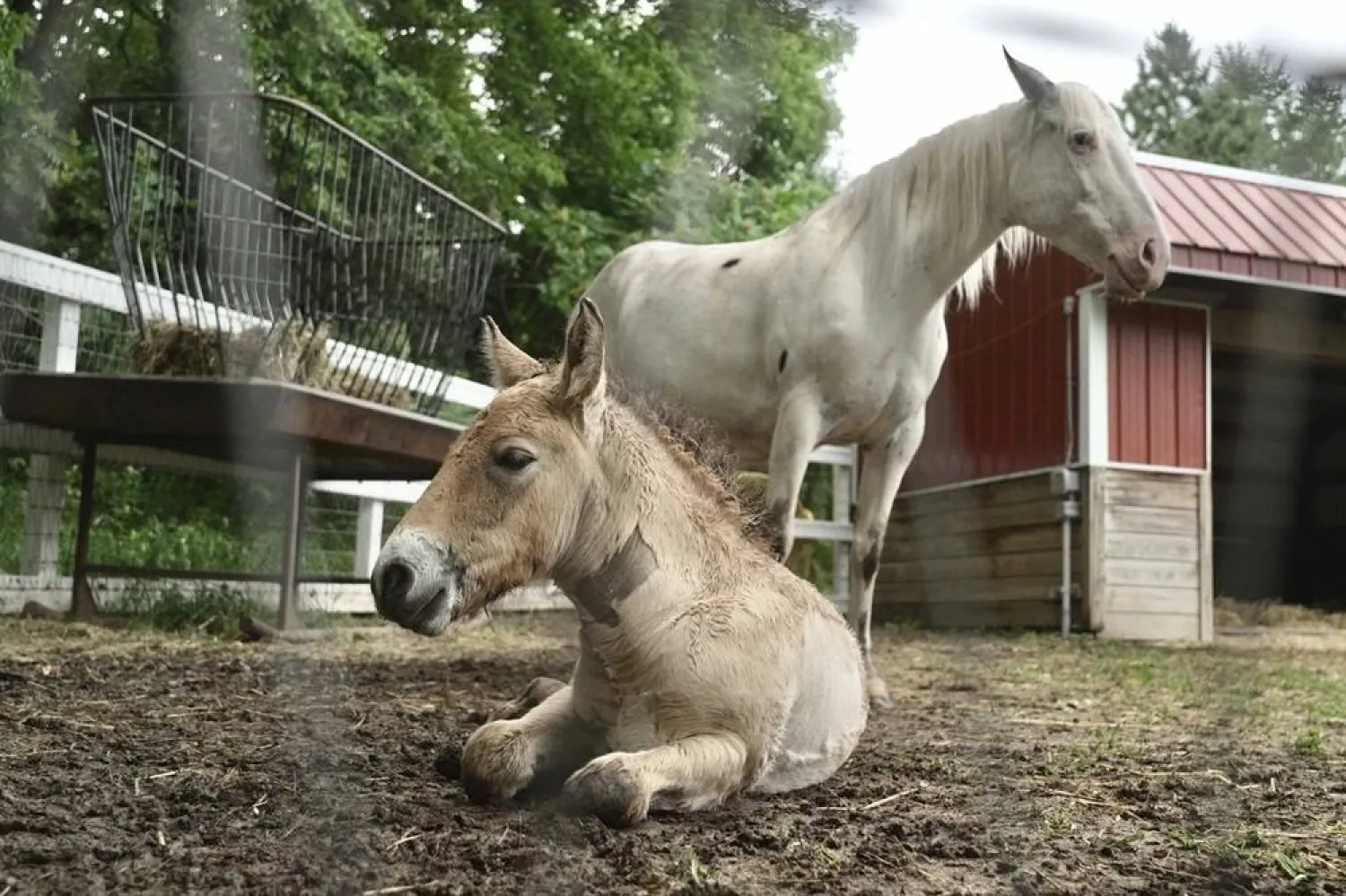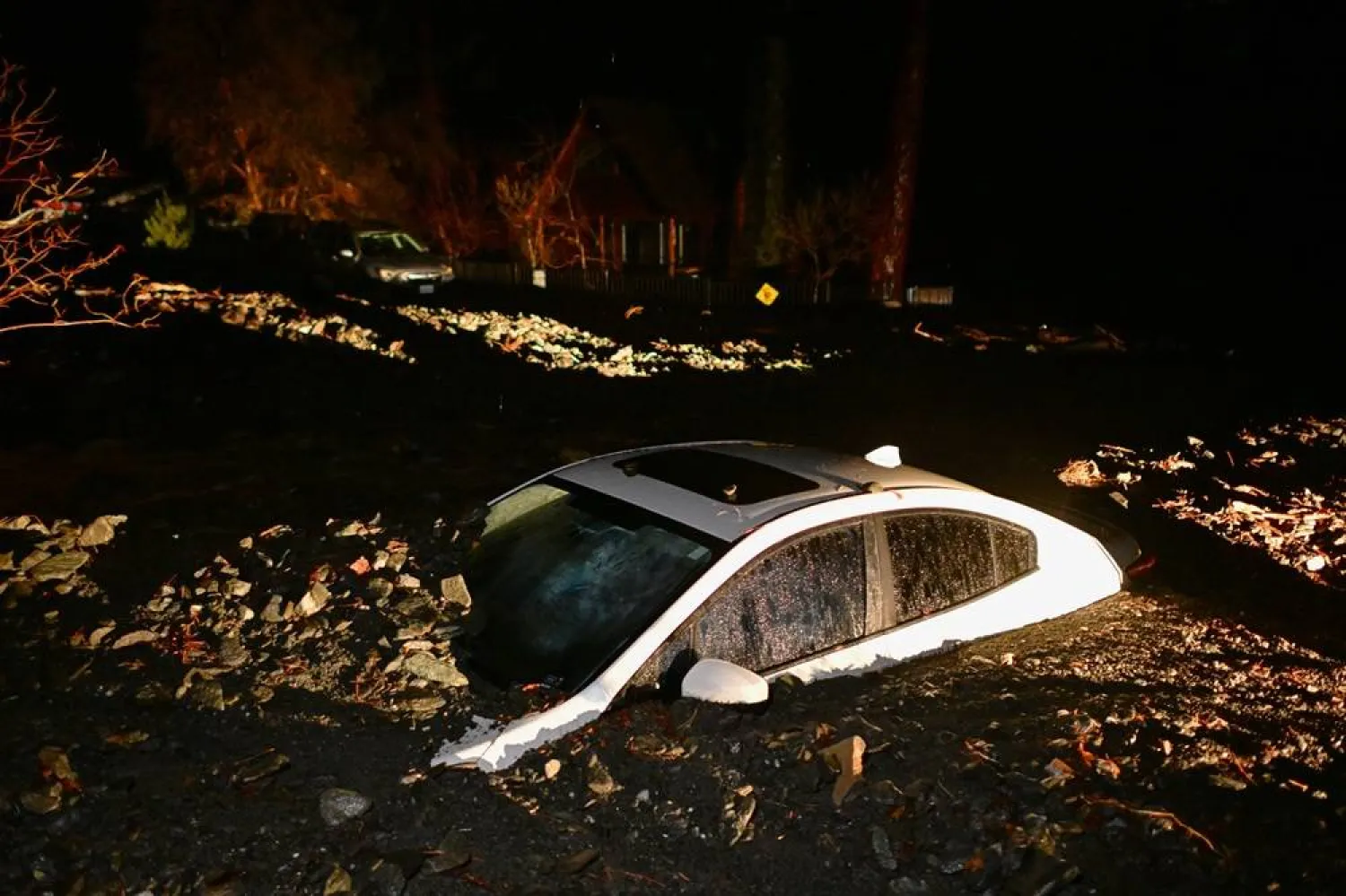An endangered wild Asian horse foal is thriving thanks to an unlikely hero.
Marat, a Przewalski’s horse, fell critically ill soon after his birth at the Minnesota Zoo nearly two months ago. He survived thanks to intensive care. But his mother rejected him when he returned.
His future looked grim until Alice, a domestic Pony of the Americas who’d recently lost her newborn, accepted him as her own. Veterinarians say this is one of the first times this kind of surrogacy has been tried with Asian wild horses, and his caregivers couldn't be happier.
Zoo staffers picked the name Marat because it means "one who is brave," and he's had to be brave from such a young age
Przewalski's are considered the only remaining truly wild horse species. They were declared extinct in the wild in the 1960s, with just a few surviving in zoos. But they've since been reestablished on the steppes of Mongolia and China, with some in Russia and Ukraine. Since fewer than 2,000 exist today, each foal is critical to the species' survival.
"Being one of the true wild horses left in the world, behaviorally, they are a little bit different," said Kurt Heinzmann, the zoo's director of animal care. They've never been truly domesticated, and they're shorter and stockier than familiar breeds, he said.
Marat was born with some limb problems that made it hard for him to stand up straight, said Dr. Annie Rivas, the zoo's director of animal health.
"And because he was struggling to keep up with Mom in the herd, he was spending a lot of time lying down on the ground and unfortunately developed bacterial sepsis. So he was very, very sick," Rivas said.
The University of Minnesota's equine intensive care unit nursed him back from his pneumonia and wounds. But it wasn't unusual that his first-time mom, Nady, would refuse to take him back.
"That left us with, ‘What are we going to do with this foal?’" Rivas said. "We could hand-rear him, but we’re not going to be the ones who are the best at teaching them how to be a horse, especially a wild horse."
Fortunately, they found Alice, a gentle mare who was still grieving her own foal but immediately started nurturing Marat and allowing him to nurse.
"It was really kind of a perfect fairy-tale ending. ... They just bonded like that," Rivas said.
Integrating Marat into the complex social hierarchies of a wild herd will be the next challenge, she said, but Alice is helping Marat learn how to behave with other horses. They'll probably stay together for a few more months. They want him to join the zoo's adult Przewalski’s herd before he's too old.
"He is definitely a wild horse," Rivas said. "One, he is a stallion, so he’s already got a big personality from that. But he is also a little more wild than you would expect a domestic horse foal to be at this point in his life. And he is trying to show me that he’s the boss, he’s in charge, he’s dominant. So he’s trying to step up, kick, assert his dominance over me."









